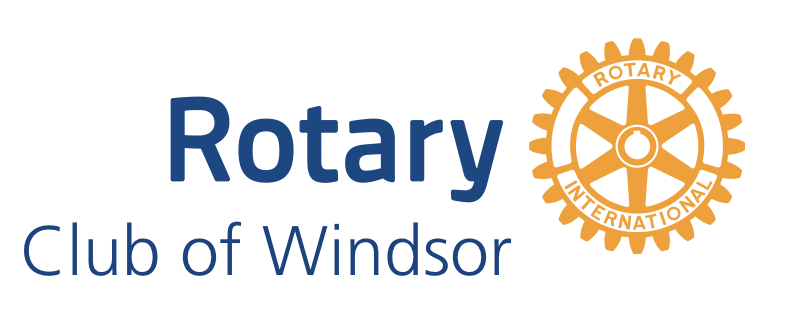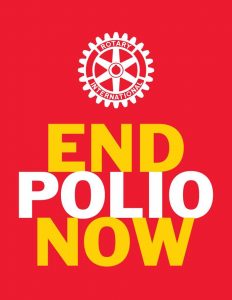Current Meeting Bulletin
John Muir's vision for protecting national parks and wilderness areas continues to inspire conservation efforts today. The National Park Service, established in 1916, was largely a result of his advocacy. Earth Day Trivia Quiz

Photography: Sue Nelson April 15, 2025
Good Morning Rotary Club of Windsor. Welcome by our Club President Barbara McChesney.
Pledge of Allegiance led by Randall Neff
Song: Larry Mills led us in the Beatle’s “Money, That’s What I Want”
Inspiration: Michael Ragsdale. “None of us are getting out of here alive, so please stop treating yourself like an afterthought. Eat the delicious food. Walk in the sunshine. Jump in the ocean. Say the truth that you’re carrying in your heart like a hidden treasure. Be silly. Be kind. Be weird. There’s no time for anything else. Do something Rotarian today!”
Visiting Rotarians: None today.
Visitors: Bill Hogan (Past Rotarian Indiana/SF), Lydia Turrel (Cali), Jeff Lefave (WHS), Student Racquel Garcia and her mother Sonya and brother Enrique.
Student of the year: Daniel Myers introduced our program and todays awardee, Racquel Garcia in the Vineyard Academy (Business and Hospitality) Core. Jeff Lefave instructor at WHS introduced Raquel who enjoys every day at school and is easy to teach! Raquel thanked the club for the award, is a senior, leadership through Girl Scouts including her senior project creating marketing/sales programs for the annual cookie sale, worked in restaurant and hospitality, loads of community service work and will be attending CSU Fullerton in Public Relations.
Announcements:
Vietnam Veteran Honor Flight on April 30
District conference on May 2-3. We need to do a club display. Anybody going to the District Conference and would like to help with a display.
Rotary International “Epic Day of Service” video is available on rotary.org and Barbara showed us a brief portion of it. Followed by our own day of service, May 17, with our annual Adopt a Road clean up along Faught Rd area. Join us Saturday, May 17, at 10am, followed by a lunchtime potluck.
JB Leep: Volunteer opportunities: Recycling at GranFondo; numerous events with Wasteless Windsor; and tonight at 5pm, Amy Whitely, leadership teacher at WHS, needs help with judging senior projects.
Next week we will celebrate all of our successes at the Evening in Seville and thank everyone that helped us.
Speaker: To celebrate Earth Day, Barbara and Dave led us in a group trivia project about our environmental historical moments, recycling, plastics, and some of the leaders involved.
Barbara followed with an Environmental moment with some facts about John Muir, national leaders, and the history of the national parks. Closed with the history of Earth Day beginning in 1970.
Thank you to: Thank you to our guests. . . . .
Greeter: Jo Timmsen
Set-up: Domingo
A/V set-up: Larry McCabe
Inspiration / Host: Mike Ragsdale
Song: Larry Mills
Scribe: Brian Ling
Environmental Trivia Game
What environmental organization was he a member of? Sierra Club
What conservation group did he co-found? Sierra Club
Where was he born? Dunbar, Scotland
9%__X___ 15%______21%_____
Footnotes:
Question #2 Ansel Adams was a prominent photographer and environmentalist who played a crucial role in the preservation of America's national parks through his iconic photographs and advocacy, particularly with the Sierra Club, promoting the "national park idea" and advocating for the creation of Kings Canyon National Park.
Here's a more detailed look at his connection:
Adams was a member of the Sierra Club, a leading environmental organization, and he actively used his photography and writings to champion the preservation of wilderness areas.
Adams's photographs of Yosemite and other national parks, like Grand Canyon,Yellowstone, and Glacier National Park, became iconic representations of the American landscape and played a significant role in shaping public perception of these natural wonders.
In 1936, he advocated for the establishment of Kings Canyon as a national park, traveling to Washington D.C. to lobby for the bill and using his photographs to persuade officials.
In 1941, the National Park Service commissioned Adams to create a photo mural for the Department of the Interior Building, showcasing nature in the U.S. National Parks, although the project was halted due to World War II.
His work continues to inspire photographers and nature enthusiasts, and his photographs are a powerful reminder of the importance of preserving America's natural heritage.
In his honor, the Minarets Wilderness south of Yosemite National Park was renamed the Ansel Adams Wilderness, and a peak on the edge of Yosemite was named Mount Ansel Adams.
In 1980, Adams received the Presidential Medal of Freedom, recognizing his contributions to environmentalism and photography.
The National Archives holds 226 photographs taken by Adams for the mural project, most of them signed and captioned by him.
A book, "Ansel Adams in the National Parks: Photographs from America's Wild Places," compiles a comprehensive collection of his photographs of America's national parks and wilderness areas.
Question #3 John Muir is widely recognized as the "Father of the National Parks" due to his significant role in establishing the National Park System and inspiring conservation efforts.He was a naturalist, writer, and advocate who helped create several national parks, including Yosemite, Sequoia, and Grand Canyon. His writings and activism played a key role in educating the public about the value of wilderness and persuading the government to protect these areas.
Here's a more detailed look at his contributions:
John Muir's passion for the outdoors and his writings helped to inspire the public and policymakers to recognize the importance of preserving America's wild places. He argued that these areas should be protected for future generations to enjoy.
Muir co-founded the Sierra Club in 1892, an organization that continues to advocate for environmental protection.
Muir had a strong influence on President Theodore Roosevelt, who was a keen supporter of conservation and expanded the national forest system significantly.
Muir's books and articles, which detailed his experiences in nature and his love for the outdoors, helped to educate the public about the beauty and value of wilderness.
Question #6:
• The study, published in the Proceedings of the National Academy of Sciences, revealed that bottled water can contain 10 to 100 times more plastic than previously estimated.
• The researchers analyzed five samples each of three common bottled water brands and found that particle levels ranged from 110,000 to 400,000 per liter, averaging around 240,000.
• According to the BBC, the majority of these particles were nanoplastics, with the remaining being microplastics.
• The study also identified seven different types of plastic in the bottled water, including polyamide, PET, polyvinyl chloride, polymethyl methacrylate, and polystyrene.
Question #8: The first Earth Day was on April 22, 1970, and it was a nationwide demonstration organized by Senator Gaylord Nelson to raise awareness about environmental issues. This event is widely recognized as the start of the modern environmental movement in the United States.
Question #14 Approximately 85% of discarded clothing in the U.S. ends up in landfills. This is equivalent to an estimated 11.3 million tons of textile waste annually, which is about 81.5 pounds per person. A significant portion of this waste is due to fast fashion trends and the use of non-recyclable synthetic materials like polyester.
Bulletin Catalog
The Mission of Windsor Rotary
The mission of the Rotary Club of Windsor is to serve our community and the world. We strive to better communicate with our members and with the community to inspire and mobilize both our local and global community in health, education, and peace to create transformative change.
The Windsor Rotary Community Foundation is a 501(c)(3) charitable non-profit, Fed EIN #68-0185065.
WEEKLY MEETINGS
Tuesday at 7:15 a.m.
Charlie’s Restaurant
Windsor Golf Course
1320 19th Hole Dr.
Windsor, CA 95492
Map it
Rotary Club of Windsor
P.O. Box 819
Windsor, CA 95492
Phone: 707-892-0492
Email: info1@windsorrotary.org

